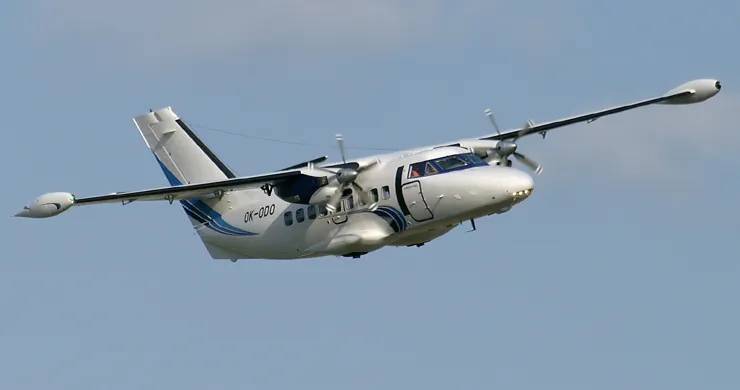
Design of aircraft is rarely a crash factor
Jun 25, 2013

The design of aircraft is seldom a direct cause of crashes, as modern aviation engineering emphasizes safety and reliability. Aircraft are subjected to rigorous testing and adhere to stringent regulations throughout their development. Engineers integrate advanced materials, aerodynamics, and technology to ensure optimal performance and resilience. While design flaws can occur, they are typically identified and addressed during the testing phase before the aircraft enters service. Most aviation incidents stem from factors such as human error, maintenance issues, or external conditions rather than inherent design shortcomings. This focus on safety in design contributes significantly to the overall reliability of air travel.
When discussing aviation safety, it's essential to understand that the design of aircraft is rarely a crash factor. While design considerations are crucial for performance, safety remains a multifaceted issue influenced by numerous elements beyond the aircraft's construction. This article delves into the various factors contributing to aviation safety, with a focus on the role of aircraft design.
Understanding Aircraft Design
The design of an aircraft encompasses various aspects, including aerodynamics, materials, and systems integration. Engineers invest significant time and resources to ensure that these elements work harmoniously to create a safe flying experience. However, despite advanced engineering, accidents can still occur due to factors unrelated to design.
Human Factors in Aviation Safety
One of the most significant contributors to aviation incidents is human error. Pilots, air traffic controllers, and maintenance personnel play critical roles in ensuring that flights operate safely. According to studies, up to 80% of aviation accidents can be attributed to human factors rather than the aircraft's design. Proper training and adherence to protocols are vital in mitigating these risks.
Environmental Considerations
Weather conditions significantly impact flight safety. Severe weather events, such as thunderstorms, icing, or turbulence, can pose challenges that even the best-designed aircraft may struggle to navigate. Pilots are trained to assess weather conditions and make informed decisions, but unexpected changes can lead to dangerous situations. Thus, while aircraft design can enhance performance under ideal conditions, it cannot eliminate the risks posed by adverse weather.
Maintenance and Aircraft Reliability
Aircraft maintenance is another critical factor in aviation safety. Regular inspections and maintenance ensure that all systems are functioning correctly. Even the most advanced aircraft can suffer from mechanical failures if not adequately maintained. According to the Federal Aviation Administration (FAA), inadequate maintenance is a contributing factor in approximately 25% of aviation accidents. Therefore, while design may enhance reliability, ongoing maintenance is essential to ensure safety.
Statistical Insights on Aircraft Safety
To illustrate the relationship between design, maintenance, and safety, consider the following statistics:
| Factor | Percentage Contribution to Accidents |
|---|---|
| Human Error | 80% |
| Mechanical Failure | 25% |
| Weather Conditions | 10% |
| Design Flaws | <1% |
This table highlights that while aircraft design plays a role in safety, it is a minor factor compared to human error, maintenance issues, and environmental factors.
Technological Advancements in Aircraft Design
Modern aircraft are designed with advanced technology, enhancing safety and performance. Innovations such as fly-by-wire systems, improved avionics, and enhanced materials contribute to aircraft reliability. However, it is essential to recognize that technology can only mitigate risks; it cannot eliminate them entirely. The integration of these technologies must be accompanied by comprehensive training for personnel to ensure they can operate and maintain these systems effectively.
Regulatory Oversight and Safety Standards
Regulatory bodies, such as the FAA and the European Union Aviation Safety Agency (EASA), enforce strict safety standards for aircraft design and operation. These regulations ensure that aircraft meet rigorous safety criteria before they are allowed to fly. While these standards are essential, they focus on design and operational practices rather than guaranteeing an absence of accidents. Continuous improvement and adaptation to new challenges are necessary to maintain high safety levels.
Case Studies: Notable Aviation Accidents
Several notable aviation accidents have underscored the complexities of aviation safety. For instance, the 1982 Air Canada Flight 797 incident resulted from human error and maintenance issues rather than design flaws. Similarly, the crash of Ethiopian Airlines Flight 961 in 1996 was primarily attributed to hijacking and pilot error rather than aircraft design. These cases illustrate that while design is crucial, myriad factors contribute to aviation safety and accident causation.
Conclusion: The Importance of a Holistic Approach
In conclusion, while the design of aircraft is vital for safety and performance, it is rarely a direct crash factor. A holistic approach to aviation safety encompasses human factors, maintenance practices, environmental conditions, and adherence to regulatory standards. By addressing these various elements, the aviation industry continues to enhance its safety record, ensuring that flying remains one of the safest modes of transportation. Understanding the multifaceted nature of aviation safety can help passengers appreciate the complexities involved in keeping them safe in the skies.
Related Articles

Explore Thailand: The Best Islands to Visit for Paradise, Adventure, and Relaxation

The Ultimate Guide to the Best Islands in Thailand for Your Next Getaway

Do babies need passports? How to get a passport for a newborn

How to get a U.S. passport fast: here’s how to expedite the process

What is Mobile Passport Control: 5 reasons why you should use it

SENTRI vs. Global Entry: A detailed guide

Do you need a passport to go to the Bahamas? Let’s find out

Do you need a passport to go to Mexico? A detailed guide

Do you need a passport to go to Canada? We got the answer

Do You Need a Passport for a Cruise: An Essential Travel Guide

Booster Seat Requirements: All the Rules to Follow in Your Rental Car

What Are the World’s Most Powerful Passports, and How Does Yours Rank?

How to Take a Passport Photo at Home: A Helpful Guide

You've got to have heart! Southwest's new livery

Your opinion: Should water be free on low cost carriers?

Young women bolder than guys as solo travellers
